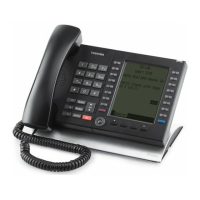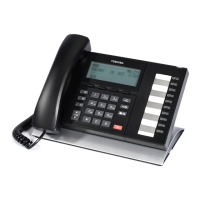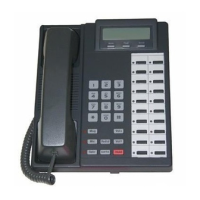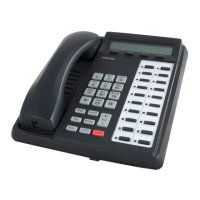Do you have a question about the Toshiba IP5132-SD and is the answer not in the manual?
Details FCC regulations and connection methods for the system.
Explains potential RF interference and compliance with FCC Class A limits.
States the system is UL listed and specifies secondary protection requirements for wiring.
Warns users about electrical ground connections and professional installation.
Outlines the terms and conditions under which Mitel grants the software license.
Specifies license terms for installing and operating the software on a server.
Details Mitel's responsibilities and options for handling third-party IP infringement claims.
Outlines user's responsibility to indemnify Mitel against claims arising from user's design or operation.
Defines the warranty period for the software and media, excluding interruptions or errors.
Describes Mitel's efforts to correct defects and the customer's remedies.
Lists conditions under which the limited software warranties become void.
Disclaims all other warranties, express or implied, including merchantability and fitness for purpose.
States warranties are void if software failure results from causes beyond Mitel's control.
Excludes liability for loss of data, profits, business, or consequential damages.
Caps Mitel's aggregate liability to the license fees paid for the software.
States this agreement constitutes the complete and exclusive agreement between parties.
Provides instructions and cautions for installing IP Telephones and cables.
Lists the IP Telephone models and Add-On Modules (ADM) supported by IPedge and VIPedge.
Explains power options (local supply, PoE) and cabling requirements for IP Telephones.
Explains how to attach and connect Add-On Modules (ADM) to IP5000 series telephones.
Details the sequence of indicators and display changes during the IP telephone's initial start-up.
Explains the process of connecting IP Telephones to the IPedge or VIPedge system.
Explains the process for connecting IP Telephones to an IPedge system.
Describes the connection process for IP Telephones to a VIPedge system.
Provides the procedure to reset four-line display phones to their factory default settings.
Details the steps to reset nine-line display phones to factory default settings.
Specifies the required software versions for IP5000 Series telephones.
Explains the licensing requirements for stations in an IPedge system.
Details the licensing requirements for telephones in a VIPedge solution.
Outlines procedures for adding, editing, deleting, and managing stations in the system.
Guides on how to add a new station using the 'Add' icon.
Explains survivability features for R1.2+ IPedge systems and inherent VIPedge survivability.
Covers station preferences like Prime DN, Station Type, Name to Display, and Network Calling Number.
Allows entering or creating a new Primary Directory Number for a station.
Configures system call forwarding group numbers.
Defines station privilege for activating Call Pickup.
Assigns the station to an Emergency Call Group.
Sets or cancels DND/Call Forward remotely from another station.
Enables/disables beep tones for incoming calls while on an existing call.
Controls how parked calls appear on other stations (on hold vs. busy).
Configures dial tone behavior for message waiting and DND status.
Allows or disallows station-to-station message waiting activation.
Enables auto-campon to a PDN when busy on a CO line.
Determines if a password is required for phone login.
Sets the EMPA and IP Mobility Login password.
Enables or disables remote login/logout of a DN on other IPT/SoftIPT stations.
Assigns functions to programmable feature buttons on IP5000 phones.
Configures Ring Down station settings and destination.
Assigns a fixed or DHCP IP address type for the station.
Enters the IP address if the type is set to Fixed.
Configures terminal authentication for IP Telephones connecting to the server.
Displays the IP address setting during the initialization process.
Describes the initial mode where the IPT contacts the VIPedge center for its serial number.
| Audio Codec | G.711, G.729a |
|---|---|
| Network Interface | 10/100 Base-T Ethernet |
| Number of Lines | 3 |
| Speakerphone | Yes |
| Headset Jack | Yes |
| Protocols | SIP |
| Power over Ethernet | Yes (IEEE 802.3af) |
| Power | PoE or AC Adapter |
| Connectors | RJ45 |











